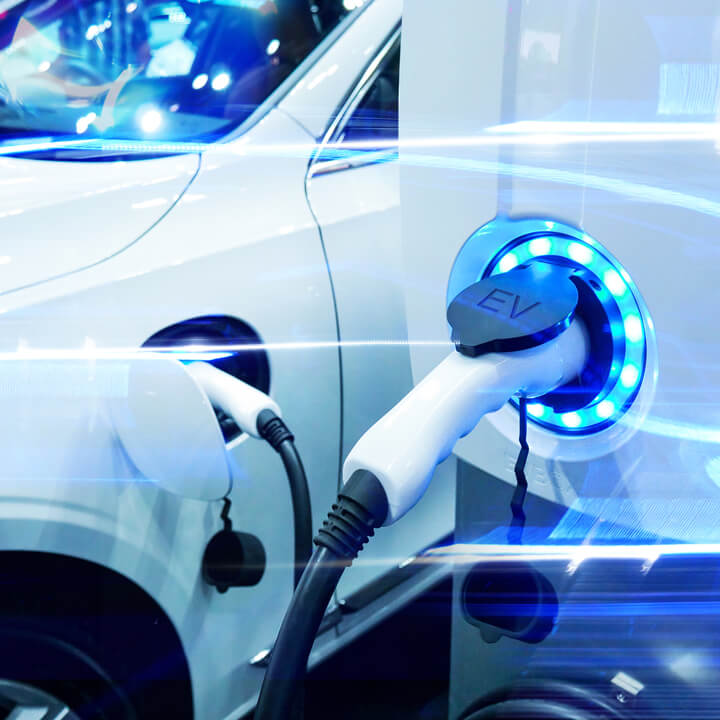Update on Electric Vehicles
14th August 2018
The UK has said that the sale of petrol and diesel cars will be banned by 2040, with a move to more low emission and electric vehicles. What is the government doing to show its commitment to this target? Below are some of the most recent developments.
On 9 July 2018, the Office for Low Emission Vehicles (OLEV) published the Road to Zero Strategy, which sets out measures for reducing emissions from road transport. The Road to Zero includes:
- a target for at least 50% (and up to 705) of new car sales and up to 40% of new van sales to be ultra low emission by 2030
- a requirement for all new homes to have a chargepoint available. The government will consult “as soon as possible” on introducing a requirement for chargepoint infrastructure for new homes in England
- an announcement that the government will consult in summer 2018 on increasing the height limit for the permitted development right in England for the installation of electric vehicle chargepoints in designated off-street parking spaces
- an announcement that the government will consult on amending Building Regulations to require relevant charging provision in new non-residential buildings.
On 19th July 2018 the Automated and Electric Vehicles Act passed through Parliament. Described as “a significant step towards improving air quality, cutting congestion, boosting road safety and the creation of thousands of jobs across the UK” the AEV Act is expected to massively improve chargepoint availability; giving the government new powers to ensure motorway services are upgraded with plenty of points, and even allowing city and regional mayors to request installations at large fuel retailers in their areas.
The new laws are targeted at improving consumer confidence in charging their vehicles by:
- making sure that public chargepoints are compatible with all vehicles
- standardising how they are paid for
- setting standards for reliability
Importantly all charge points sold or installed are now required to be ‘smart’, meaning they can receive, process and react to information or signals, such as by adjusting the rate of charge or discharge; transmit, monitor and record information such as energy consumption data; comply with requirements around security; and be accessed remotely. This was deemed vital to ensure that the UK’s energy system can cope with the increased demands expected.
Hot on the heels of the AEV Act on 23rd July 2018 the Infrastructure and Projects Authority (IPA) on behalf of HM Treasury launched the Charging Infrastructure Investment Fund (CIIF) Request for Proposals. The aim of the fund is to catalyse the rollout of electric vehicle charging infrastructure that is required to support the electrification of vehicles, by providing greater access to finance on a commercial basis. On top of 50% government funding of up to £200 million, the fund manager (or managers) selected will be required to raise an additional £200 million private sector capital and be responsible for managing the entire fund. The CIIF will fund all elements of EV charging infrastructure including:
- the ownership and operation of charge points
- developing the software and platforms required to run charging infrastructure and to make them smart, communicative and interoperable
- paying for grid connections to the national and local electricity distribution networks, as well as any related grid reinforcement
- battery storage solutions that may be related to the provision and operation of charge points.
The focus of the fund will be on new capacity (as opposed to refinancing existing capacity) and IPA suggests that ‘petrol station’ or hub-type sites in busy urban and suburban locations could be likely investment targets. Interestingly, it has also suggested the use of minimum usage guarantees from vehicle fleets to fund charging depots, or contractual arrangements for projects with underwritten ancillary revenue streams.
Ofgem published proposals on 23 July 2018 for system reforms to support “electric vehicle revolution”. These proposals include offering incentives to drivers to charge their electric vehicles at certain times – often when renewables like wind and solar are generating the most power, or when there is lower demand on the energy system. This was a key recommendation from the UK’s first ever National Infrastructure Assessment (chapter 3, Revolutionising Road Transport, which outlines recommendations for preparing the UK’s infrastructure for electric vehicles) which also recommended that national and local government work with Ofgem to help develop a national charging network, giving drivers certainty that they will be able to charge their cars quickly whenever they are in the country.
Chairman of the National Infrastructure Commission Sir John Armitt said:
“Our National Infrastructure Assessment highlights the need to take steps now to prepare our roads and our energy system for greater demand for electric vehicles.
“Today’s proposals have the potential to reap the benefits that electric vehicles can bring to the electricity system by ensuring we make the most efficient use of the electricity we already have available, including from renewable sources – and all while keeping costs down for customers. We look forward to seeing the outcome of this consultation.
“But we also need to see investment in a truly national, visible charging network, so that infrastructure can give drivers the confidence to make the switch from petrol and diesel, and not be the barrier.”


